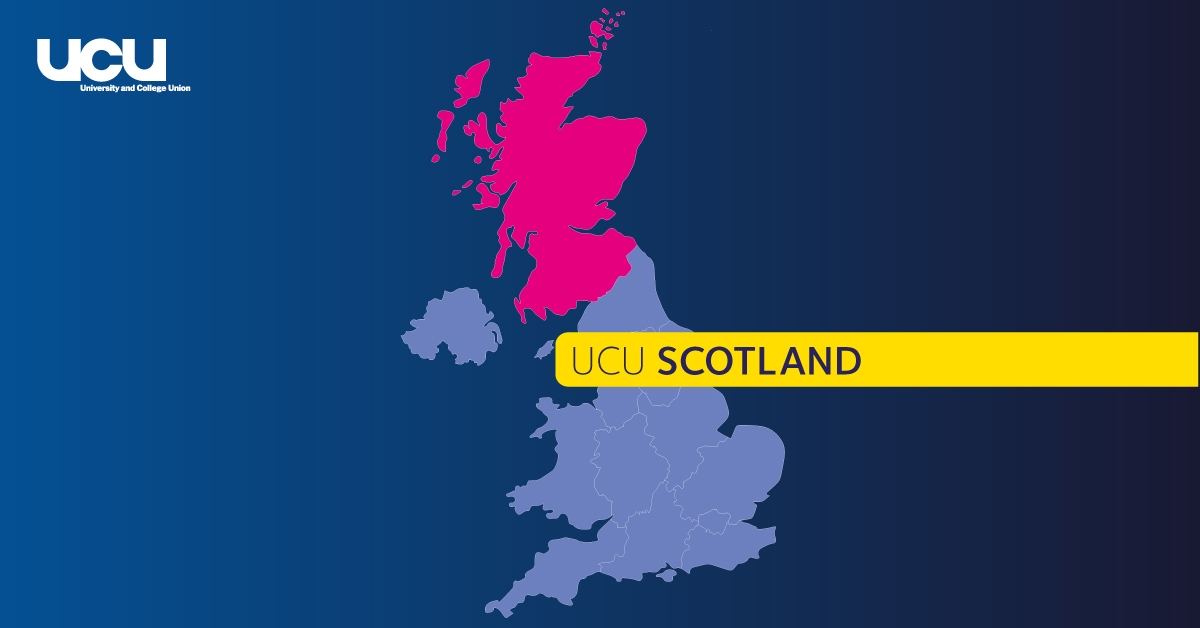Wide gap between Scotland's best and worst areas for educational success, says report
19 October 2009
Where you live will determine your chances of educational success and the gap between people living in underachieving areas and those in traditionally strong educational areas is still huge, despite £100 million spent in Scotland on trying to widen university participation since 2005. A damning new report by the University and College Union (UCU) reveals the full extent of the postcode lottery when it comes to educational achievement.
LOCATION, LOCATION, LOCATION – the widening education gap in Britain and how where you live determines your chances report from the University and College Union (UCU) analyses educational achievement by Westminster parliamentary constituency in Great Britain and ranks each according to the percentage of people with at least some qualifications and the percentage of people with a degree or above. It also provides analysis of 21 of Britain's biggest cities by constituency including Glasgow and Edinburgh.
While Scotland compares well with the rest of the country for the highest percentage of people with degrees with three constituencies in the top twenty for Great Britain, there is still a huge divide in the proportion of people with degrees between constituencies across Scotland and within Glasgow.
The analysis of the different cities reveals stark contrasts. For example, over half of people (53%) in Ann McKechin's Glasgow North constituency have a degree and only 7% have no qualifications at all. However, just down the road in John Mason's Glasgow East constituency over a quarter of people (29%) have no qualifications and just 16% have a degree. In Glasgow North East the rates are only marginally better where a quarter of the people (25%) have no qualifications, although a almost quarter (23%) do have degrees.
Although a lot of the constituencies with the lowest levels of educational achievement are traditional 'Labour' seats in the larger towns and cities, constituencies in the Highlands feature among those with the lowest percentage of people who have a degree or better. One is the constituency of the First Minister, Alex Salmond, Banff and Buchan, the other being Caithness, Sutherland and Easter Ross held by John Thurso a Liberal Democrat.
Mary Senior, UCU Scottish Official, said: "While Scotland is achieving reasonable levels of the population with degrees it lags behind the rates achieved in England. However, our investment in higher education means we achieve well overall and do not have any constituencies in the bottom 20 for people with degrees. Investment must be increased if Scotland is to reach the levels of population with degrees that will allow the knowledge economy to rise out of the ashes of the recession.
"There is still more effort required on access to university, employment and better health opportunities to break down the divide within, and between, our great cities and address the lack of people with degrees in our vast rural areas in the Highlands. We call on the candidates for the Glasgow North East by-election to make increasing educational attainment a priority."
LOCATION, LOCATION, LOCATION – the widening education gap in Britain and how where you live determines your chances can be found at www.ucu.org.uk/locationlocationlocation and has detailed tables of:
- the percentage of people educated to at least degree level by constituency
- the percentage of people without qualifications by constituency
- the 20 constituencies with the highest percentage of people educated to degree level (with changes since 2005)
- the 20 constituencies with the lowest percentage of people educated to degree level (with changes since 2005)
- Scotland's two largest cities broken down and analysed by constituency.
- PrintPrint this page
- Share



Comments